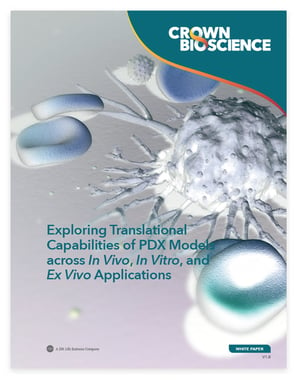- Services
- Therapeutic Areas
- Model Systems
- In Vitro
- In Vivo
- Technologies
- Service Type
- About Us
- Our Science
- Start Your Study Now

Patient-derived xenografts are recognized as the most predictive preclinical model available for oncology research, providing the animal model system which is closest to human disease. While highly useful for in vivo studies, PDX early stage drug discovery uses have been limited. Immuno-oncology applications are also restricted due to PDX being commonly used in immunodeficient mice.
PDX-derived resources – such as in vitro cell lines and ex vivo platforms- allow PDX key advantages to be exploited across the full preclinical research continuum. PDX-derived cell lines recapitulate clinically relevant features for enhanced predictivity in early stage preclinical research. 3D ex vivo PDX platforms allow cost effective, high throughput drug screening linked to parental model genetics for responder subgroup analysis.
Humanized PDX models are also expanding model use into the immuno-oncology research space, providing multiple research functions allowing the study of the heterogeneity of human disease within a humanized immune system.
Your privacy is important to us.
We'll never share your information.
© 2024 Crown Bioscience. All Rights Reserved.


© 2024 Crown Bioscience. All Rights Reserved. Privacy Policy
2023-05-22
2018-05-11
landing_page
PDX/Databases